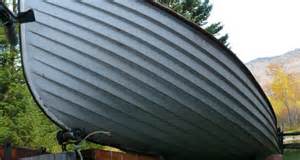
Buying a Boat?
Maybe an older one?
Ah, I know they don’t make them like this anymore!
A proper inspection of a boat is a matter of knowing where to look for the most common problems. A good Marine Surveyor makes it easier to know where to focus. Because many of the issues on older vessels involve rot, corrosion, and/or manufacturers' defects, most therefore are not covered by insurance. Discovering issues early can help you avoid expensive headaches later.
An inspection is no substitute for a marine survey; if you're buying a boat, hire a professional after you've conducted your own checkout. Some tips you can do on your own before bringing in a surveyor follow.
Hull and Deck
The most serious structural issues on runabouts and center consoles are soft transom cores. Water that gets into the transom and can eventually compromise the hull's structural integrity. Professionals use the handle of a screwdriver or a small plastic hammer to tap on the transom to listen for signs of softness, which is something you can do as well. Start at any fitting below the waterline; a healthy ring means a solid core, while a dull thud often signals a soft spot. Stains around poorly bedded fittings, such as transducers or tie-downs, often indicate water slowly leaking out of the transom, another warning sign. If you suspect a problem, contact a professional. The repair is not a job for the average boat owner because it involves removing the affected core from between the fiberglass sandwich.
Decks and floors can also suffer from water intrusion. Leaking fittings, such as railings and cleats, will cause the deck core, either balsa, wood, or foam, to absorb water and delaminate. A delaminated deck feels soft underfoot. Floors often rot around seat bases, where water has leaked past the fittings. Mushiness and wobbly seats can indicate deteriorated plywood in the floor.
Gelcoat and Paint
Gelcoat is a very thin coating over fiberglass (to make it look glossy) and easily cracks wherever excessive flexing occurs, such as on unsupported decks or cabin roofs, or where the boat structure makes a sharp angle — at cockpit corners, for example. Though usually not serious, it can indicate that a "hard point" from an internal structure like a bulkhead is pushing from within and can reveal places in the hull or on deck that have weak supports. Gelcoat cracking in the hull can indicate minor collisions or trailering mishaps, though on lighter-built boats, they are often unavoidable. Crazing on a relatively new boat might call for a professional investigation. It's possible to re-gelcoat bad areas, but the cracking will almost certainly return unless the area is reinforced.
Do Some Research
Before buying a boat, do a little homework and search the available databases by make and model,
It's also a good idea to check the USCG recall database: http://uscgboating.org/links/recalls-and-safety-defects.php If a boat you're looking at (or your own boat) is listed in the database, call the manufacturer with the Hull Identification Number in hand and see if the recall has been addressed. There's no expiration on recalls, and if the work hasn't been completed yet, the manufacturer is obligated to do it.